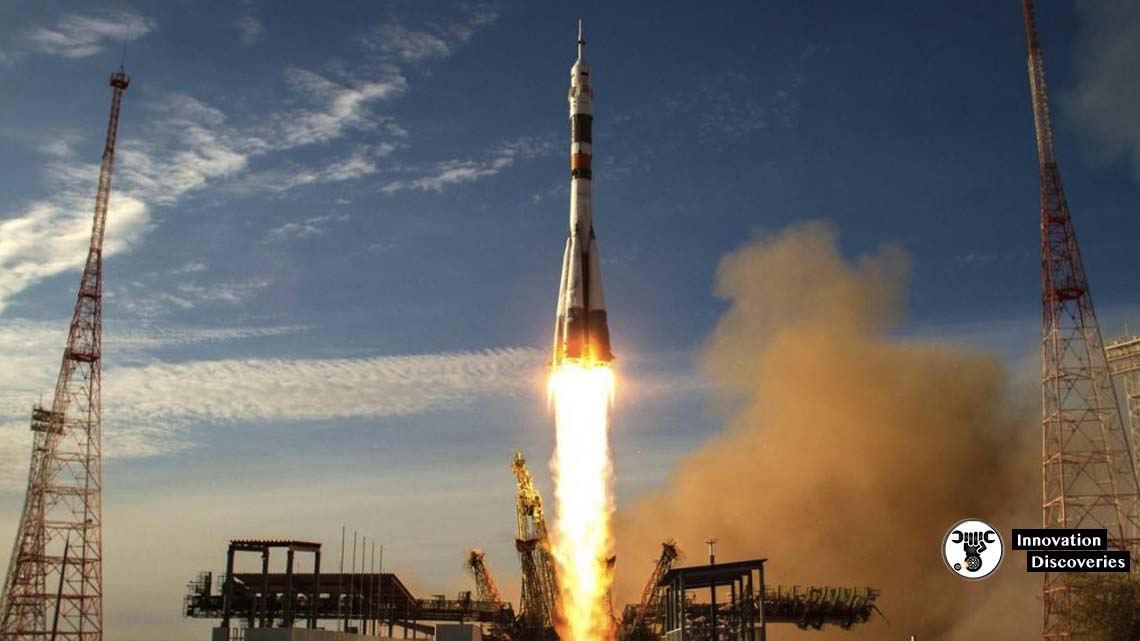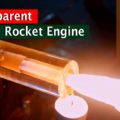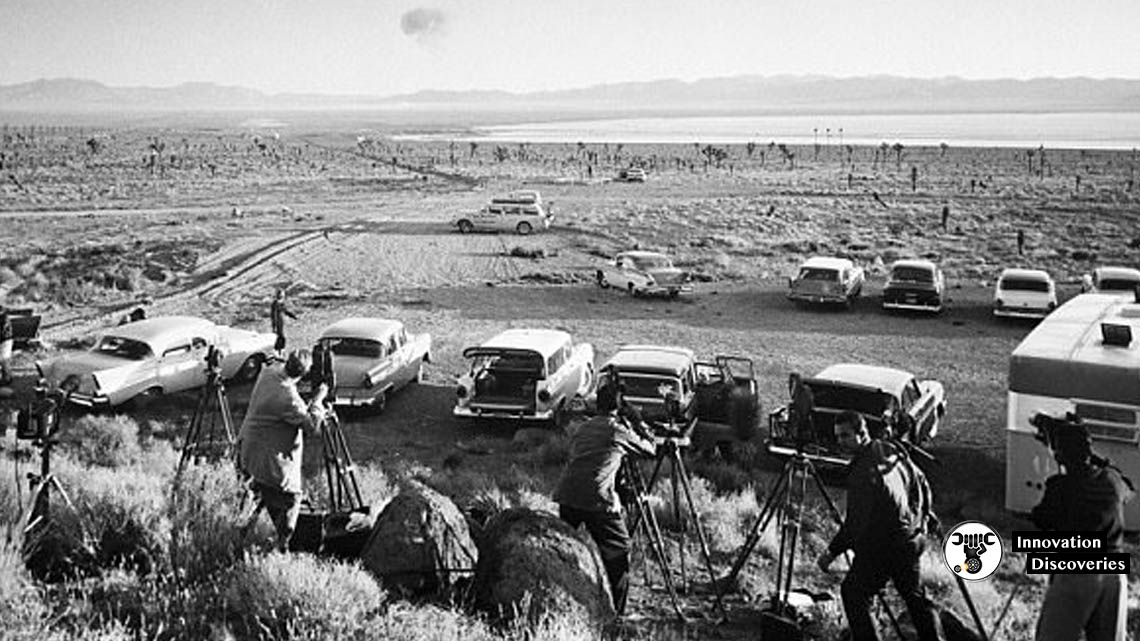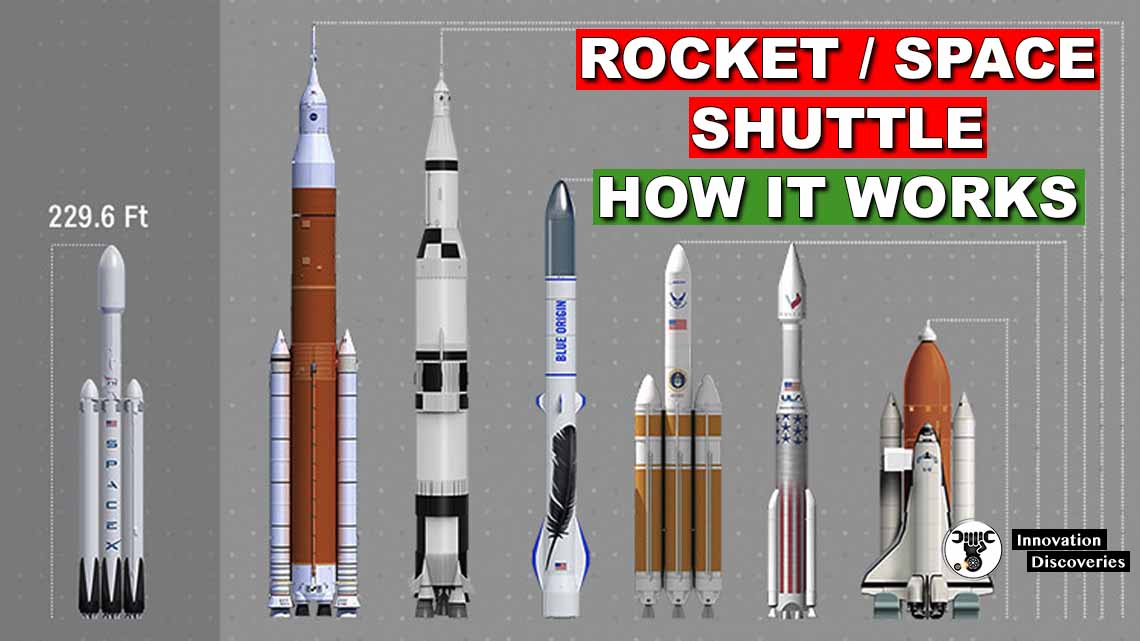A rocket is a missile, spacecraft, aircraft or another vehicle that obtains thrust from a rocket engine. Rocket engine exhaust is formed entirely from propellant carried within the rocket before use. Rocket engines work by action and reaction and push rockets forward simply by expelling their exhaust in the opposite direction at high speed and can, therefore, work in the vacuum of space.
In fact, rockets work more efficiently in space than in an atmosphere. Multistage rockets are capable of attaining escape velocity from Earth and therefore can achieve unlimited maximum altitude. Compared with airbreathing engines, rockets are lightweight and powerful and capable of generating large accelerations. To control their flight, rockets rely on momentum, airfoils, auxiliary reaction engines, gimballed thrust, momentum wheels, deflection of the exhaust stream, propellant flow, spin, and/or gravity.
How are Rockets Designed?
The classic rocket consists of a cylindrical shell of the metal composition. There is a cone at the front of the rocket and fins toward the rear of the rocket body for stability. The rocket cone and fins aid in the smooth flight of the rocket through the air while the rocket body provides enough room for control circuitry, fuel, parachutes when appropriate, and permits smooth flight.
Rocket engines; however, require the use of an oxidizer in addition to a fuel source, fuel pumps, combustion chamber, and nozzles. Since rockets are expected to operate in space, their fuel source must include an oxidizer, or the rocket motor will fail to operate as it approaches the edges of the Earth’s atmosphere.
WORKING PRINCIPLE
A rocket engine is generally throwing mass in the form of high-pressure gas. The engine throws the mass of gas out in one direction in order to get a reaction in the opposite direction. The mass comes from the weight of the fuel that the rocket engine burns. The burning process accelerates the mass of fuel so that it comes out of the rocket nozzle at high speed. The fact that the fuel turns from a solid or liquid into a gas when it burns does not change its mass. If you burn a pound of rocket fuel, a pound of exhaust comes out the nozzle in the form of high-temperature, high-velocity gas. The form changes, but the mass does not. The burning process accelerates the mass.
ROCKET AERODYNAMICS
Rocket aerodynamics is the study of how air flows over a rocket and how this affects drag and stability.
The nose cone and fins of a rocket are designed to minimise drag (air resistance) and to provide stability and control (keep it pointing in the right direction without wobbling).
1. Nose cone and rocket diameter affect drag
The amount of air resistance that opposes a rocket’s motion depends mainly on the shape of the nose cone, the diameter of the rocket and the speed of the rocket.
The first point that meets the air is the nose cone at the front end of the rocket. If the speed of a rocket is less than the speed of sound (1,200 km/h in the air at sea level), the best shape of a nose cone is a rounded curve. At supersonic speeds (faster than the speed of sound), the best shape is a narrower and sharper point.
Rockets with a larger diameter have more drag because there is more air being pushed out of the way. Drag depends on the cross-sectional area of the object pushing through the air. Making a rocket as narrow as possible is the best way to reduce drag.
The speed of a rocket through the air similarly increases drag. As speed doubles, drag increases four times as much.
2. Fins control direction and stability
The stability of a rocket is its ability to keep flying through the air pointing in the right direction without wobbling or tumbling.
Fins are used on smaller rockets to provide this stability and control direction. It works in the same way as placing feathers at the tail of an arrow. The greater drag on the feathers keeps the tail of the arrow at the back so that the point of the arrow travels straight into the wind.
To understand how to place fins and how large to make them, it is important to understand about the centre of mass and centre of pressure.
3. Centre of mass
The centre of mass of an object is the point at which all of the mass of an object can be thought to be concentrated.
To find the centre of mass of a rigid object such as a water bottle rocket, balance the rocket on your finger so that the rocket is horizontal. The centre of mass is a point directly above your finger.
The centre of mass can be moved closer to the nose cone end of a rocket by adding some mass near the nose cone. This will increase stability.
4. Centre of pressure
The single point at which all of the aerodynamic forces are concentrated is called the centre of pressure.
To find the approximate position of the centre of pressure, draw an outline of the rocket on a piece of paper. The centre of the area of the outline shape is approximately the centre of pressure.
The centre of gravity (CG) (also known as the centre of mass) closer to the front end of the rocket than the centre of pressure (cp).
For a rocket to be stable, the centre of pressure needs to be closer to the tail end than the centre of mass. If the centre of pressure is in the same position as the centre of mass, the rocket will tumble. Stability increases as the distance between the centre of mass and the centre of pressure increases.
Placing fins at the tail end of a rocket moves the centre of pressure closer towards the tail end and increases stability. However, this also increases drag, so there is an optimal size for fins so that the rocket has enough stability without having too much drag.
ROCKET CONTROL
They use electronic sensors to measure any changes in motion so that moveable fins automatically respond.
Pitch, Roll and Yaw
* Pitch is a measure of how high or low the nose cone is pointing.
* Yaw is a measure of how far to the left or the right the nose cone is pointing.
* Roll is a measure of how much the rocket has rotated on its longest axis.
Pitch, yaw and roll are called the ‘three degrees of freedom’ that refer to the rotational movement in any direction.
Pitch, yaw and roll are called the ‘three degrees of freedom’ that refer to the rotational movement in any direction. The easiest way to think of these is to imagine you are a rocket. If you lean forwards or backwards, that’s a pitch. If you lean from side to side, that’s yaw. If you spin around, that’s roll
The first problem in controlling which direction a rocket will fly is to get it pointing in the right direction.
An electronic sensor was used to measure how much the rocket rolls as it moves through the air. Moveable fins at the tail of the rocket were programmed to automatically correct the roll to keep the rocket flying without roll
They built vertical wind tunnels to test their designs and systems before launching their rocket for a full launch test. Their rockets are designed to fly between 600 and 900 metres high. Altitude was not the major focus. Their focus was to build a rocket to respond to changes in roll and to correct itself during flight. All systems performed as expected.
Translational movement
There are three more degrees of freedom that refer to translational movement – the movement of the whole rocket in the x, y and z axes. Measuring and controlling the position and orientation of a rocket as it is moving through the air with all of these possible directions is a complex task.
Six degrees of freedom
The electronic sensor measures any movement in all six degrees of freedom. The rocket is programmed to move small aerofoils near the front end of the rocket to control the rocket fully. This is a more sensitive and accurate method of control than just moving flaps on the large fins at the back of the rocket. Malcolm and Avinash are working towards developing their control systems to fully control the flight of a rocket in all six degrees of freedom.
Subsonic versus supersonic flight control
Research began with speeds of up to half the speed of sound. Once the problems associated with this have been mastered, they intend to develop a control for rockets travelling faster than the speed of sound.
Near the sound barrier, shock waves from the small fins no longer active in the same way. Shock waves from off all leading surfaces as they punch their way through the air. This changes the way the air flows over the small fins near the base of the nose cone. Powerful and rigid actuators are required to maintain control of the fins as they are battered by these shock waves, and they no longer control the rocket as much. Controlling the rocket becomes much more complex.
TYPES OF CHEMICAL PROPELLANT ENGINE
Chemical rocket engines use a fuel (something to burn) and an oxidiser (something to react with the fuel). Together, they are referred to as the propellant.
As the propellant reacts inside a combustion chamber, the chemical reaction produces hot gases. It is the ejection of these rapidly expanding hot gases at high speed from the rocket nozzle that creates thrust.
The fuel and oxidiser can be stored as solids, liquids or a hybrid (a combination of solid and liquid).
1. Solid propellant rocket engines
In a solid-fuel engine, the fuel and oxidiser are already mixed together and set as a solid inside the combustion chamber. This solid is called the propellant grain. The centre is normally hollow to increase the surface area available for reaction to take place.
The rate at which the chemical reaction takes place depends on the type of fuel chosen and the surface area of the exposed grain. The inside length is a normally hollow section to increase the amount of grain exposed and available to react. A star-shaped hollow section is often used to maintain a steady burn with even thrust.
The Space Shuttle has two solid rocket boosters (SRBs). These are the two big white rocket sections on the side of the Space Shuttle that produce the visible flames and smoke. The SRBs are the largest solid-fuel engines ever used in a launch. Each SRB burns nearly 4000 kg of propellant each second and ejects the resulting hot gases to produce a thrust of 12.5 meganewtons (MN).
Solid-fuel rocket engines have three important advantages:
* Simplicity
* Low cost
* Safety
They also have two disadvantages:
* Thrust cannot be controlled.
* Once ignited, the engine cannot be stopped or restarted.
2. Liquid propellant rocket engines
Liquid propellant rocket engines use liquid fuel (such as liquid hydrogen or kerosene) and liquid oxidiser (such as liquid oxygen). These are stored in separate tanks and then pumped into the combustion chamber as required. As they are sprayed into the combustion chamber through injection nozzles, they rapidly mix together and react before being ejected. The hot gases are ejected through a narrow throat. Ejecting more mass per second at higher speeds increases thrust.
One advantage of a liquid fuel system is that the amount of thrust can be controlled. This is done by limiting how quickly the fuel is pumped into the combustion chamber.
The three main engines on the tail of the Space Shuttle orbiter are liquid-fuel rocket engines. The external tank (ET) is the big orange tank and contains two separate storage tanks – one containing liquid hydrogen and one containing liquid oxygen.
The hydrogen and oxygen are pumped to the three main engines. They are sprayed into a combustion chamber where the hydrogen reacts with the oxygen to form gaseous water. It is the high-speed ejection of this gaseous water that produces the thrust.
Each main engine produces a thrust of 1.8 MN (1.8 million N). It does this by reacting 1340 litres of propellant each second and ejecting the gaseous water at a speed of 3560 m/s (12 800 km/h).
All kinds of fuel combinations get used in liquid propellant rocket engines. For example:
* Liquid hydrogen and liquid oxygen – used in the Space Shuttle main engines
* Gasoline and liquid oxygen – used in Goddard’s early rockets
* Kerosene and liquid oxygen – used on the first stage of the large Saturn V boosters in the Apollo program
* Alcohol and liquid oxygen – used in the German V2 rockets
* Nitrogen tetroxide/monomethylhydrazine – used in the Cassini engines
3. Hybrid propellant rocket engines
A hybrid propellant system has the fuel as a solid inside the combustion chamber. The liquid oxidiser is stored in a separate tank. The simplest hybrid system is to have the oxidiser under pressure in its tank. When a valve is opened, this oxidiser is released into the combustion chamber. It then reacts with the solid fuel before being ejected.
One example of a hybrid system is the Ātea-1 launched by Rocket Lab.
Future of Rocket Propulsion Systems
One of the current focus areas for rocket science research is in electromagnetic propulsion. The ultimate goal of this research is to produce a spacecraft or rocket fully reliant on electrical power. In the current research, the rocket engine accelerates ions through the use of electrostatic force. Other methods such as electromagnetism are used to help directly accelerate the mass. The electric power is then used to ionize the atoms in the system and create a voltage gradient capable of accelerating them to extremely high exhaust velocities. To date, these propulsion systems have not been able to produce sufficient force on their own to consistently work; however, they have been able to generate sufficient thrust when combined with nuclear electric systems to work.






One Comment